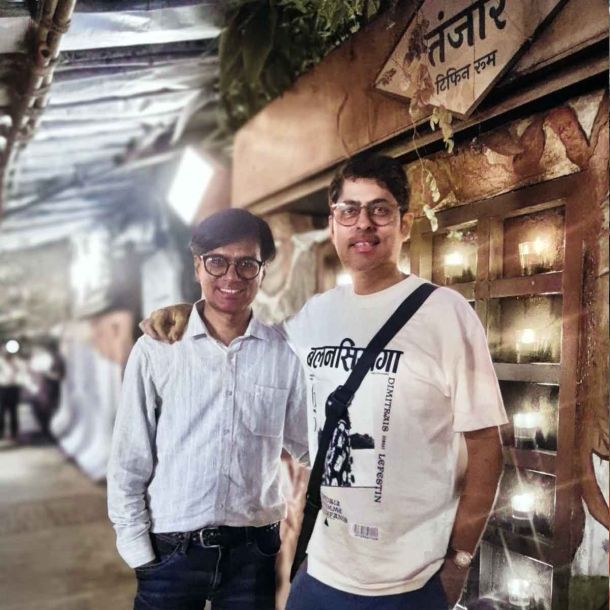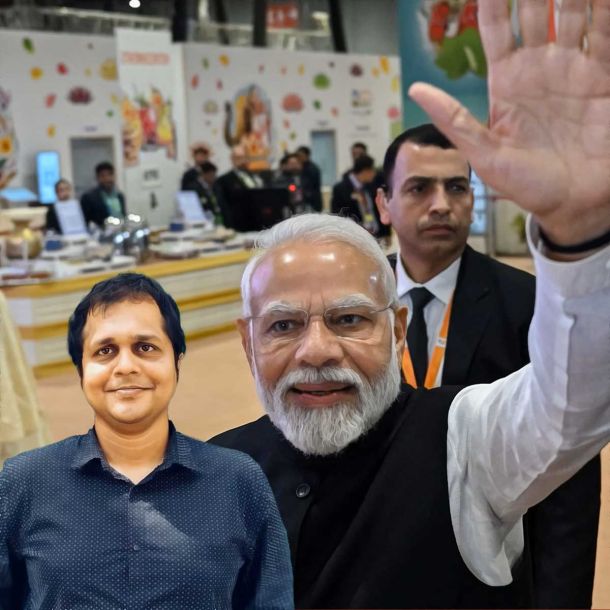More Coverage
Twitter Coverage
Satyaagrah
Written on
Satyaagrah
Written on
Satyaagrah
Written on
Satyaagrah
Written on
Satyaagrah
Written on
JOIN SATYAAGRAH SOCIAL MEDIA
"Beyond gravity, within safety": ISRO's Gaganyaan mission progresses with Drogue Parachute tests, prioritizing astronaut safety, aiming to send a crew to 400 km orbit for 3 days, it utilizes Human Rated LVM3 and comprehensive training in Bengaluru

In a crucial series of tests between August 8-10, 2023, the Vikram Sarabhai Space Centre, part of the Indian Space Research Organisation (ISRO), marked significant progress for its ambitious Gaganyaan mission. These experiments, held at the state-of-the-art Rail Track Rocket Sled (RTRS) facility in the Terminal Ballistics Research Laboratory, Chandigarh, were realized in association with the Aerial Delivery Research and Development Establishment (ADRDE), a wing of the Defence Research and Development Organisation (DRDO).
|
Gaganyaan, ISRO's much-anticipated mission, is about safely ferrying astronauts to outer space and ensuring their secure return to Earth. An integral aspect of this mission lies in the precise deployment of drogue parachutes. These specialized parachutes are instrumental in both stabilizing the astronaut crew module and decelerating its speed, ensuring that it reaches a safe velocity during the critical phase of re-entry into the Earth's atmosphere.
These parachutes are no ordinary designs. Nestled within specially designed pyro-based devices, known as mortars, these drogue parachutes are carefully constructed to launch into the atmosphere on command. Featuring a unique conical ribbon design and spanning an impressive 5.8 meters in diameter, they utilize a single-stage reefing system. This inventive design not only restricts the canopy area but also attenuates the initial jolt when deployed, ensuring the crew module descends in a controlled and gentle manner.
The comprehensive tests at the RTRS facility meticulously replicated a spectrum of real-world scenarios, thoroughly assessing the drogue parachutes' performance and robustness. The first experiment delved into simulating the maximum reefed load, setting a new benchmark by integrating reefing into a mortar-deployed parachute, a first-of-its-kind feat in India. The subsequent tests investigated the performance of the parachutes under maximum disreefed load and circumstances replicating the maximum angle of attack the Crew Module might encounter during its voyage.
Achieving success in these RTRS tests stands as a significant validation phase for the drogue parachutes, indicating their preparedness to be incorporated into the upcoming Test Vehicle-D1 mission. Earlier in the year, the RTRS facility witnessed tests for the Pilot and Apex cover separation parachutes, further underlining the steadfast advancements in the parachute systems pivotal to the Gaganyaan mission.
The Gaganyaan mission's intricate parachute deployment mechanism comprises a sequence of ten distinct parachutes. Initiating with the release of two Apex cover separation parachutes, it progresses with stabilization through the launch of two drogue parachutes. Subsequent to the drogues' release, the system initiates the extraction phase. Here, three individual Pilot chutes play a critical role, each extracting one of the three main parachutes. This methodical sequence ensures the Crew Module's velocity is tempered to safe thresholds, paving the way for a safe touchdown.
Gaganyaan: India's Forefront in Human Spaceflight Mission
The Human Space Flight Centre (HSFC) stands at the helm of the Indian Space Research Organisation's (ISRO) ambitious Gaganyaan programme. With its primary objective to navigate the Gaganyaan mission, HSFC seeks to centralize and streamline all space activities undertaken across various ISRO centers, research establishments across India, educational institutions, and industries. The vision is clear - realizing a successful human spaceflight mission. HSFC's focus revolves around ensuring top-tier reliability and the highest standards of human safety. It pioneers research and development in innovative technology segments like life support systems, bioastronautics, and human factors engineering. Delving into these spheres is vital as they form the foundation for future extensive human space activities, encompassing aspects like space station constructions, collaborations for manned Moon or Mars missions, and potential explorations of near-earth asteroids.
The Gaganyaan Mission Unveiled | The Gaganyaan mission is monumental. Its core aim is to demonstrate India's prowess in human spaceflight by sending a three-member crew into a 400 km orbit for three days and then ensuring their safe return to Earth with a landing in Indian territorial waters. Achieving this is no small feat. It demands pooling together a wealth of expertise from ISRO's rich legacy, tapping into the innovative potential of India's academic and research fraternity, harnessing the capabilities of the national industry, and also leveraging state-of-the-art international technologies.
Several critical technologies are being developed as foundational pillars for the Gaganyaan mission. From a human-rated launch vehicle ensuring the crew's safe journey into space, life support systems offering Earth-like ambience in outer space, to provisions for crew emergency escape, and comprehensive training and management protocols for crew recovery and rehabilitation - the Gaganyaan mission encompasses it all.
To ensure utmost preparedness, ISRO has planned a slew of precursor missions. These are aimed at validating the readiness of the technologies, which include the Integrated Air Drop Test (IADT), Pad Abort Test (PAT), and Test Vehicle (TV) flights. Every system's safety and reliability will be stringently tested in unmanned missions before embarking on the manned journey.
A Closer Look: The Human-rated LVM3 - HLVM3
ISRO's trusted and proven heavy-lift launcher, the LVM3 rocket, is the chosen vehicle for the Gaganyaan mission. The rocket is a marvel, with its solid stage, liquid stage, and cryogenic stage. Every system in the LVM3 is meticulously re-configured to align with the human rating prerequisites. This refurbished version is aptly named Human Rated LVM3 or HLVM3. Its mission is clear - safely propel the Orbital Module into a Low Earth Orbit of 400 km.
HLVM3's innovative design incorporates the Crew Escape System (CES). This system, powered by rapidly reacting solid motors, ensures the Crew Module and its occupants are swiftly moved to safety during any emergency, whether it's at the launch pad or during the ascent phase.
The Orbital Module (OM), which will be circling the Earth, consists of two integral parts: the Crew Module (CM) and the Service Module (SM). The CM is designed as a comfortable habitation for the crew in space. Double-walled, it comprises a pressurized metallic inner structure and an external structure equipped with a Thermal Protection System (TPS). The SM, on the other hand, supports the CM in orbit, housing systems like thermal, propulsion, power, and avionics.
Pioneering New Technologies | Human safety is the cornerstone of the Gaganyaan mission. In line with this, ISRO is on the path of innovating and introducing a plethora of new technologies. These span both engineering systems and those centered around human needs.
Training India's Spacefarers | Bengaluru houses a state-of-the-art Astronaut Training Facility. Here, future astronauts undergo comprehensive training - from academic courses, physical fitness regimes, to specialized training on flight procedures and simulators. The curriculum is vast, encompassing Gaganyaan flight systems, understanding micro-gravity via parabolic flights, aero-medical training, and even yoga, ensuring India's astronauts are the best-prepared spacefarers.
 Support Us
Support Us
Satyagraha was born from the heart of our land, with an undying aim to unveil the true essence of Bharat. It seeks to illuminate the hidden tales of our valiant freedom fighters and the rich chronicles that haven't yet sung their complete melody in the mainstream.
While platforms like NDTV and 'The Wire' effortlessly garner funds under the banner of safeguarding democracy, we at Satyagraha walk a different path. Our strength and resonance come from you. In this journey to weave a stronger Bharat, every little contribution amplifies our voice. Let's come together, contribute as you can, and champion the true spirit of our nation.
 |  |  |
| ICICI Bank of Satyaagrah | Razorpay Bank of Satyaagrah | PayPal Bank of Satyaagrah - For International Payments |
If all above doesn't work, then try the LINK below:
Please share the article on other platforms
DISCLAIMER: The author is solely responsible for the views expressed in this article. The author carries the responsibility for citing and/or licensing of images utilized within the text. The website also frequently uses non-commercial images for representational purposes only in line with the article. We are not responsible for the authenticity of such images. If some images have a copyright issue, we request the person/entity to contact us at This email address is being protected from spambots. You need JavaScript enabled to view it. and we will take the necessary actions to resolve the issue.
Related Articles
- "Global trust, local talent: India's invitation to the semiconductor world": PM Modi announces that India's moment has arrived in the semiconductor, Global leaders unite in praise as India gets ready to take center stage in the semiconductor industry
- "Innovation is the calling card of the future": Jaldost, a revolutionary airboat by Bengaluru's National Aerospace Laboratories, powers through aquatic weeds, carving the path towards preserving cleaner water bodies, a testament to indigenous innovation
- "And the winds and the waves are always on the side of the ablest navigators": ISRO successfully launched GSLV-F12/NVS-01 Mission from SDSC-SHAR, Sriharikota, NVS-01 first of the India's second-generation NavIC satellites that accompany enhanced features
- "If art is to have a special train, the critic must keep some seats reserved on it": In a momentous event, PM Narendra Modi flagged off Puri-Howrah Vande Bharat Express in Odisha, marking a significant milestone in India's railway infrastructure evolution
- "Cyberspace undeniably reflects some form of geography": Ashwini Vaishnaw launched "Bharat 6G Alliance" for better collaboration between Govt, industry and academia in developing indigenous 6G products, India already has 200+ patents for 6G
- "Research is creating new knowledge, without which there is no progress": National Research Foundation - a visionary initiative by the Indian govt aimed at centralizing funding for scientific & academic research with an ambitious target of ₹50,000 crore
- ISRO successfully tested the Gaganyaan Service Module Propulsion System (SMPS) on July 19, 2023 at ISRO Propulsion Complex (IPRC) , Mahendragiri
- "A lotus symbolizes purity amidst adversity": Introducing 'Namoh 108', a new variety of special lotus with 108 petals from Lucknow's CSIR-NBRI, it's not just a flower, but a tribute to India's traditions, plus, it blooms longer than other lotuses
- "Research is formalized curiosity. It is poking and prying with a purpose": Full-sized digital scan of the Titanic, which lies 3,800 m (12,500 ft) down in the Atlantic, has been created using deep-sea mapping, providing a unique 3D view of the entire ship
- India embarks on a transformative journey, aiming to launch its first semiconductor chip in Dec 2024 & to inaugurate a cutting-edge bullet train by 2026 under PM Modi's ambitious vision for technological self-reliance and the unification of economic zones
- "In self-reliance, there is freedom and dignity": In just 18 months, India has embarked on the domestic production of 38 APIs, marking a massive stride towards pharmaceutical self-reliance. It's more than progress; it's a testament to our national resolve
- "Reach high, for stars lie hidden in your soul": Marking an historic feat, ISRO successfully launched 7 Singaporean satellites, each showcasing technological prowess, another milestone of India-Singapore partnership and the future of space exploration
- "Ability is Prabhu-given, prowess is earned": New Generation Ballistic Missile Agni Prime successfully flight tested by DRDO on 7th June from Dr APJ Abdul Kalam Island off the coast of Odisha, all the objectives of flight test successfully demonstrated
- Ten most compelling evidence of Extraterrestrial existence from 2020
- "There is no law except the law that there is no law": Samudrayaan with Matsya 6000 is set to unlock the ocean's enigmatic heart, heralding a new era in harnessing marine resources for a sustainable future symbolizing a big leap in deep-sea exploration




























